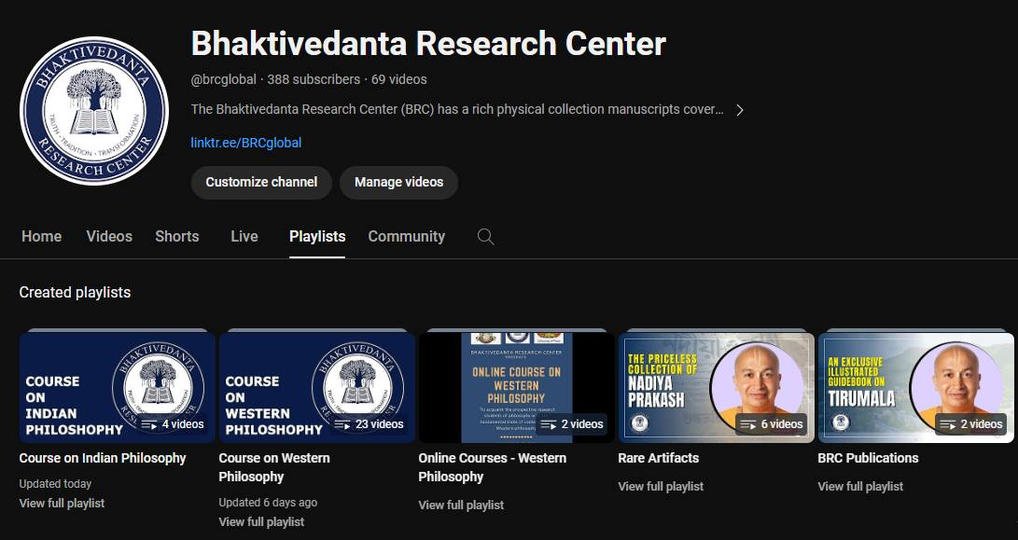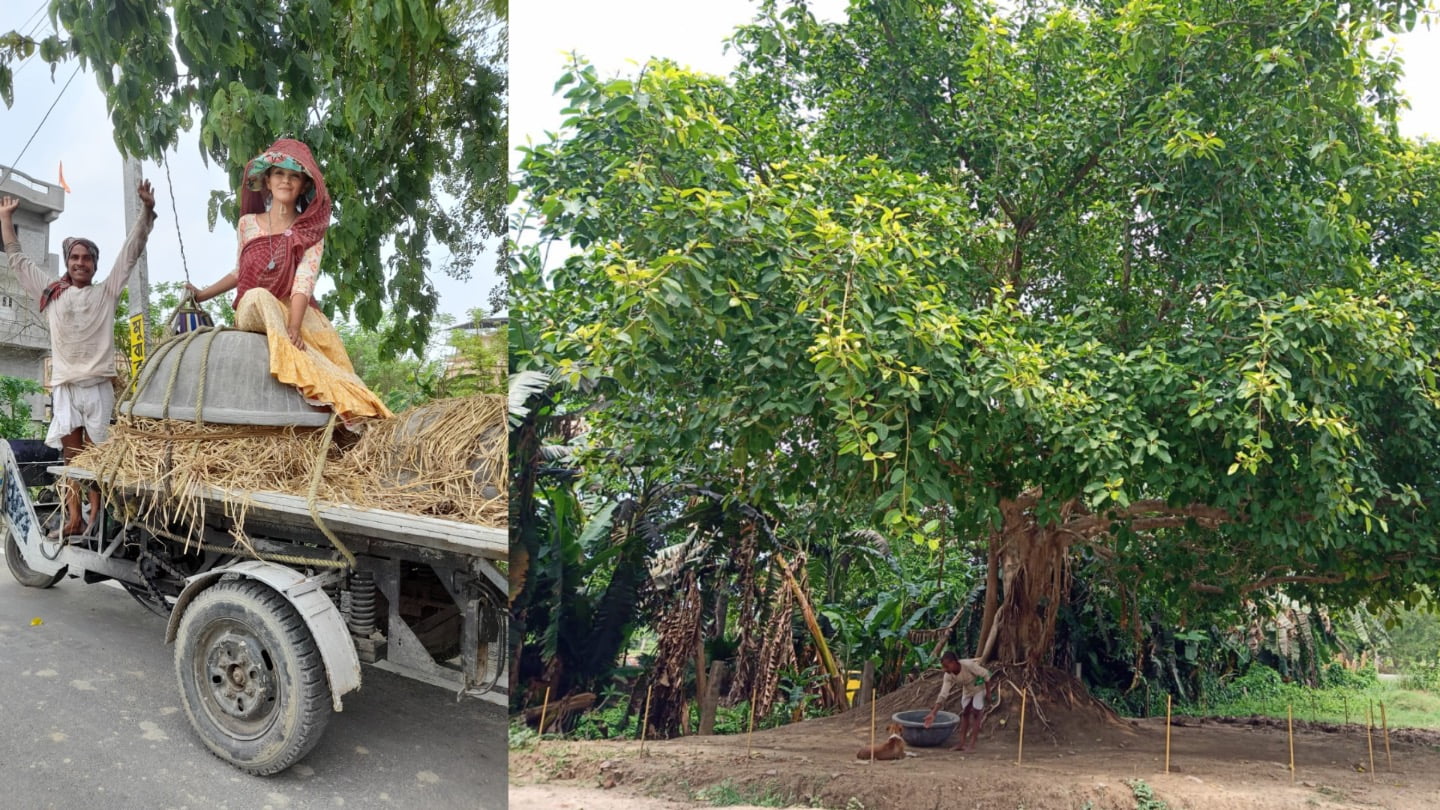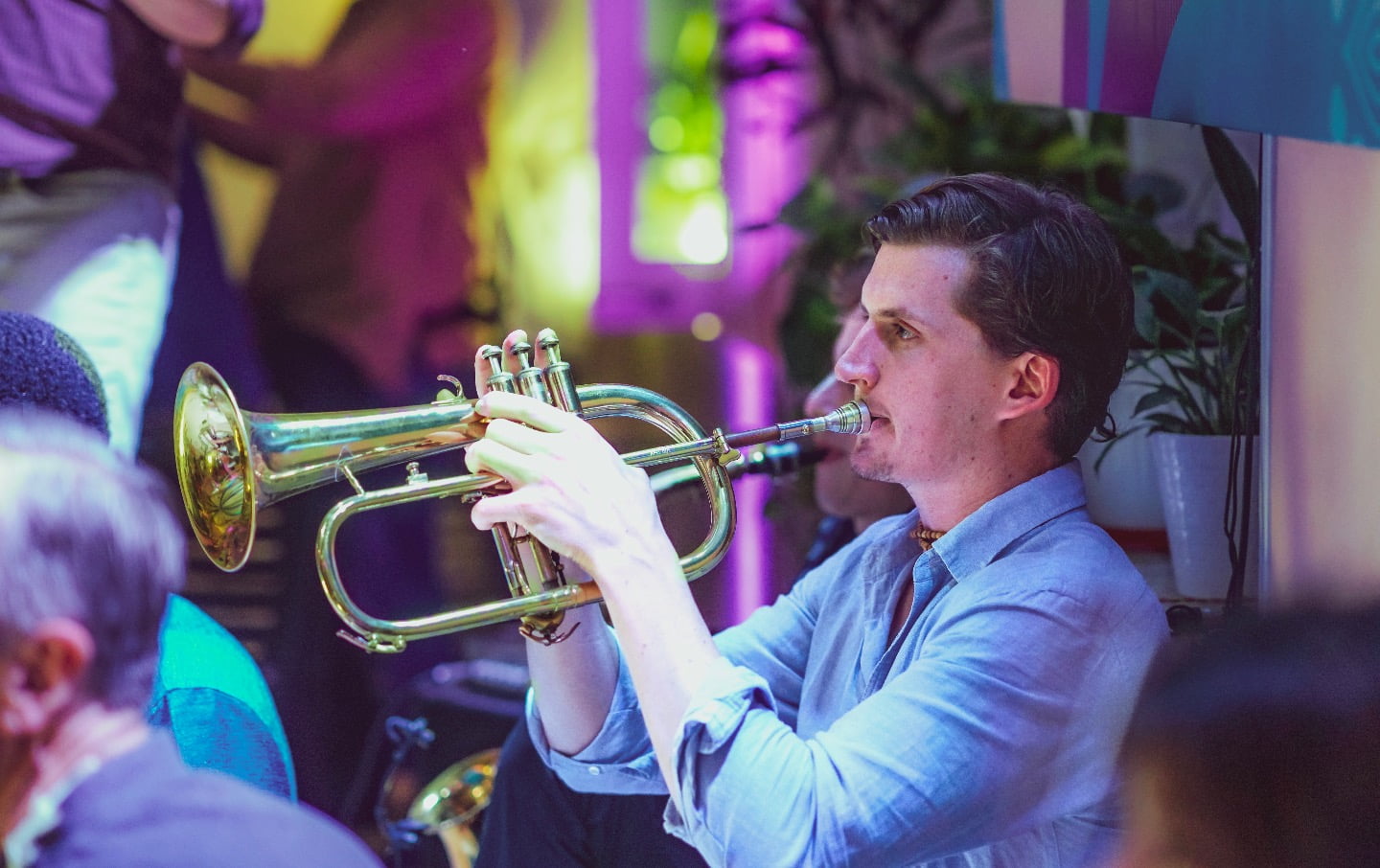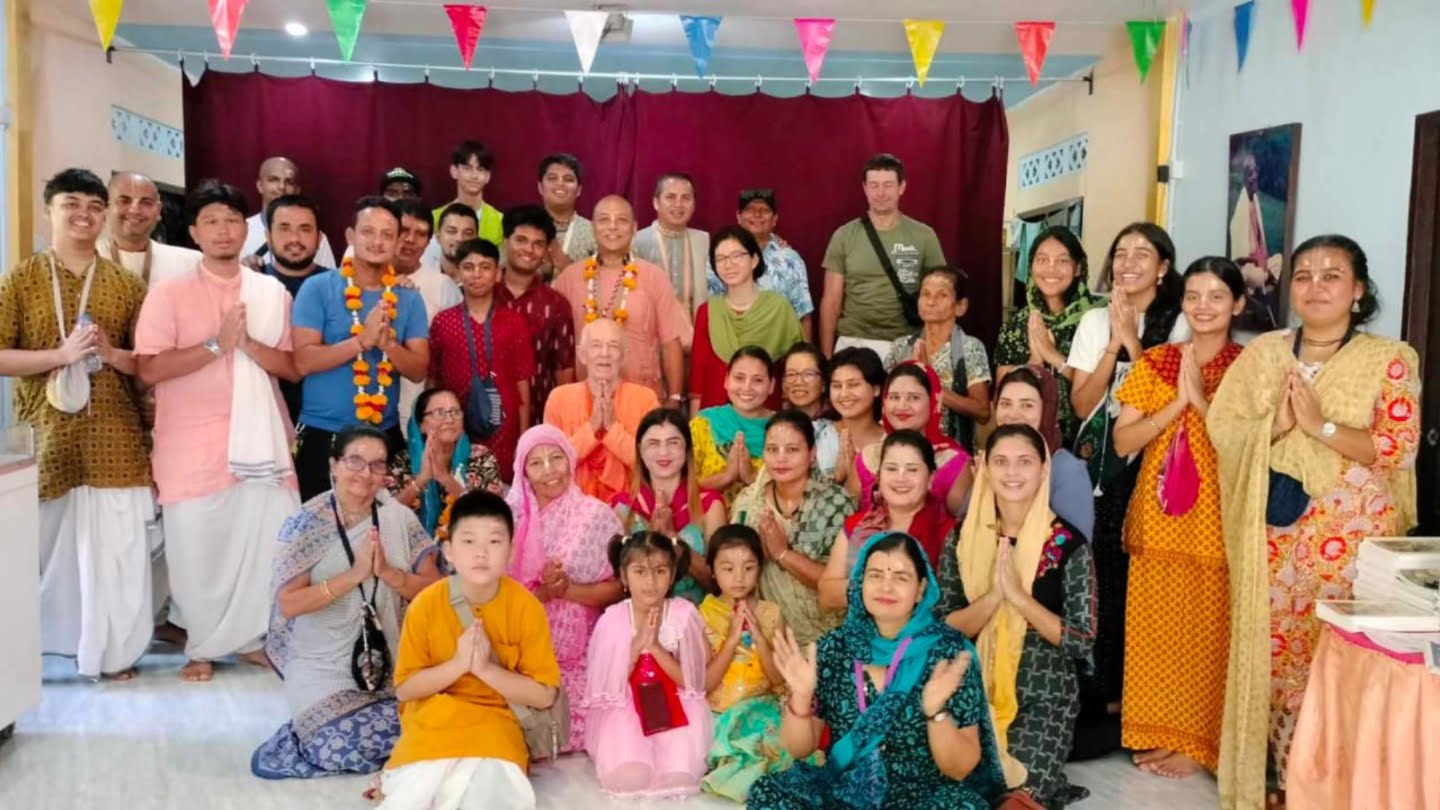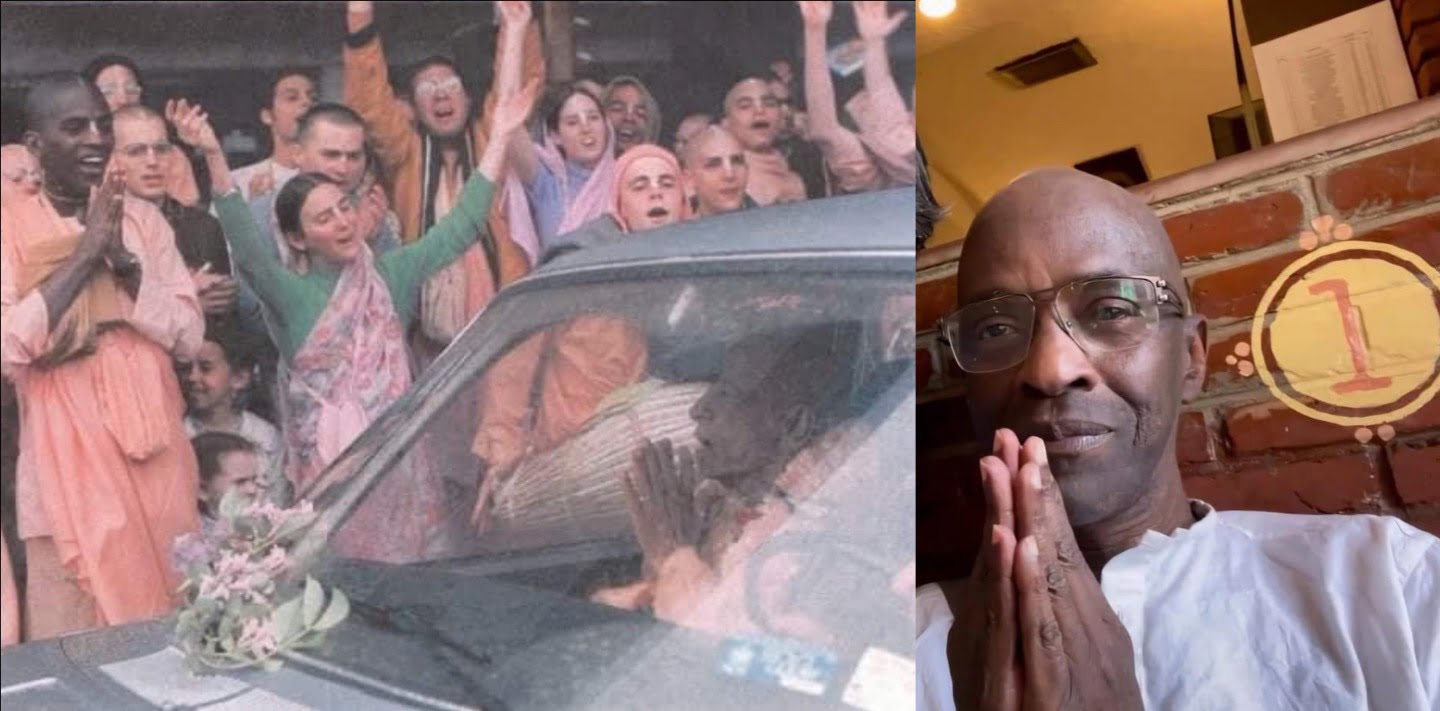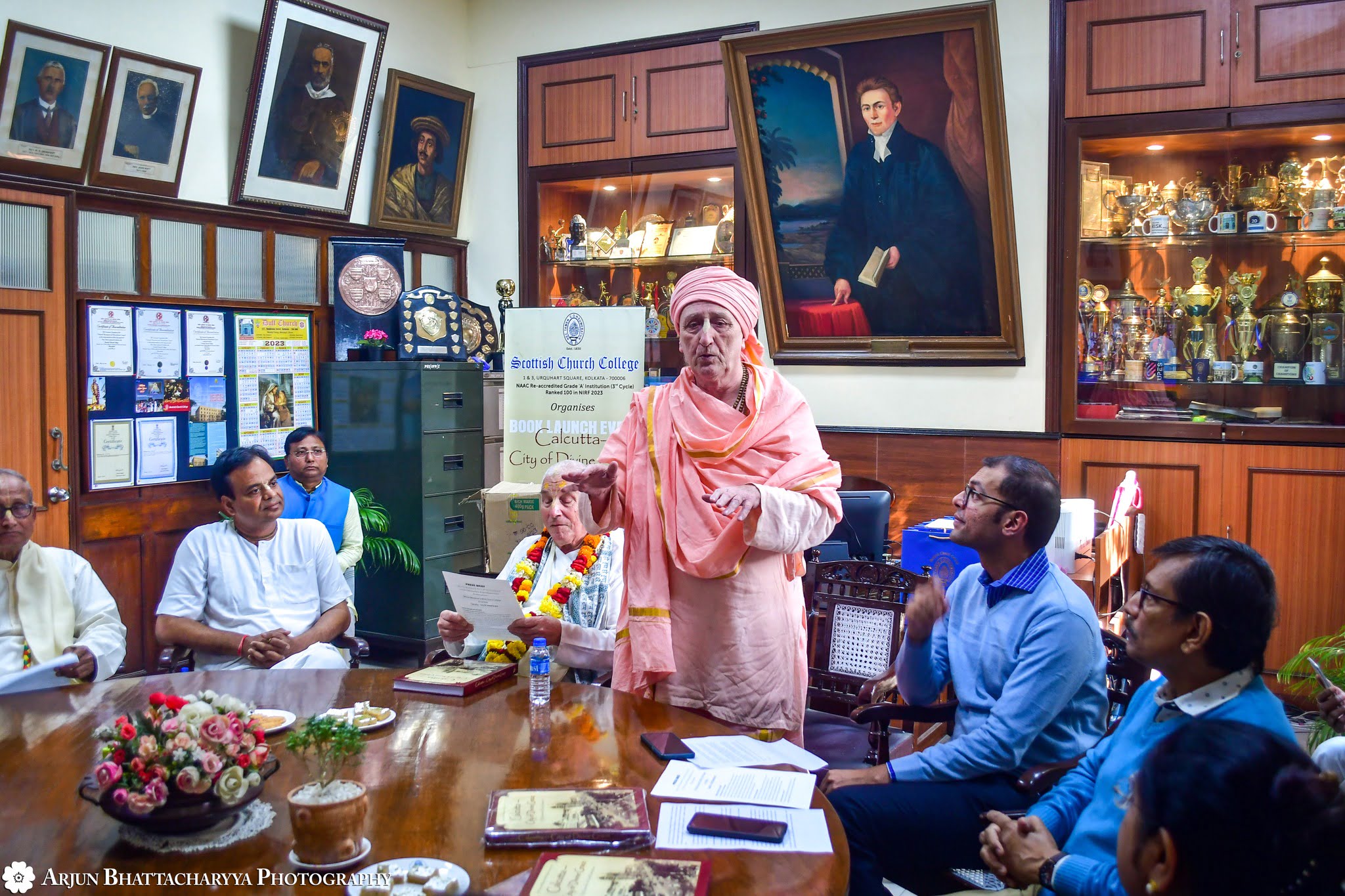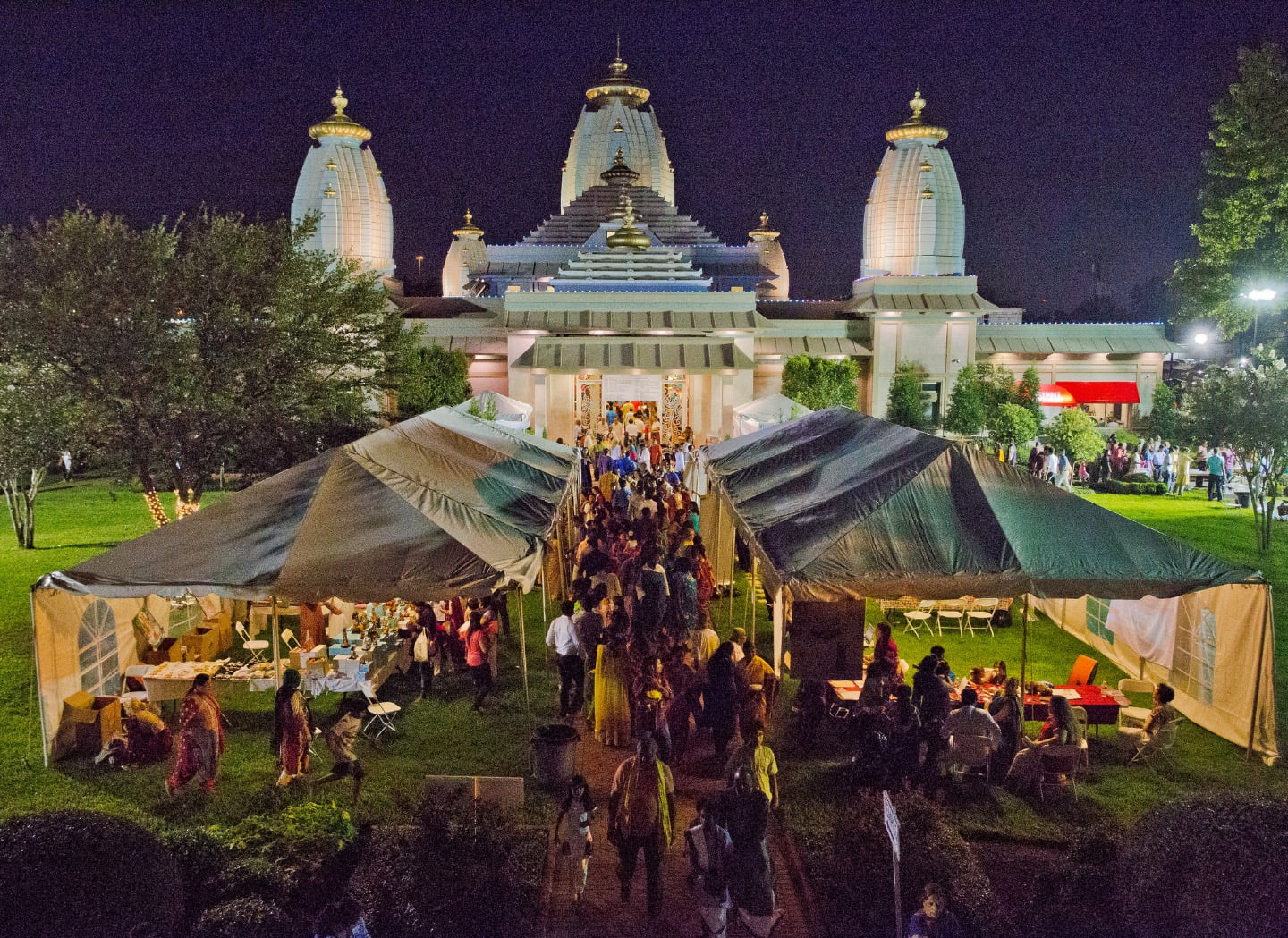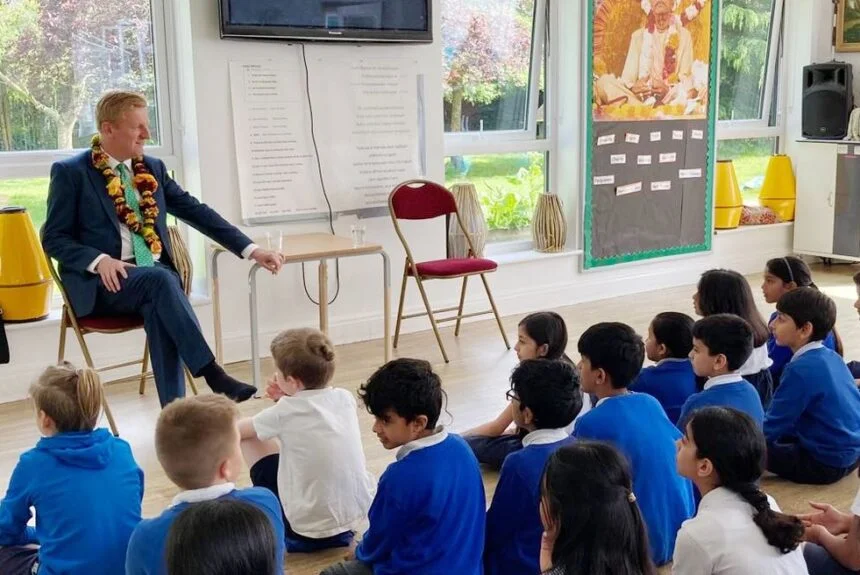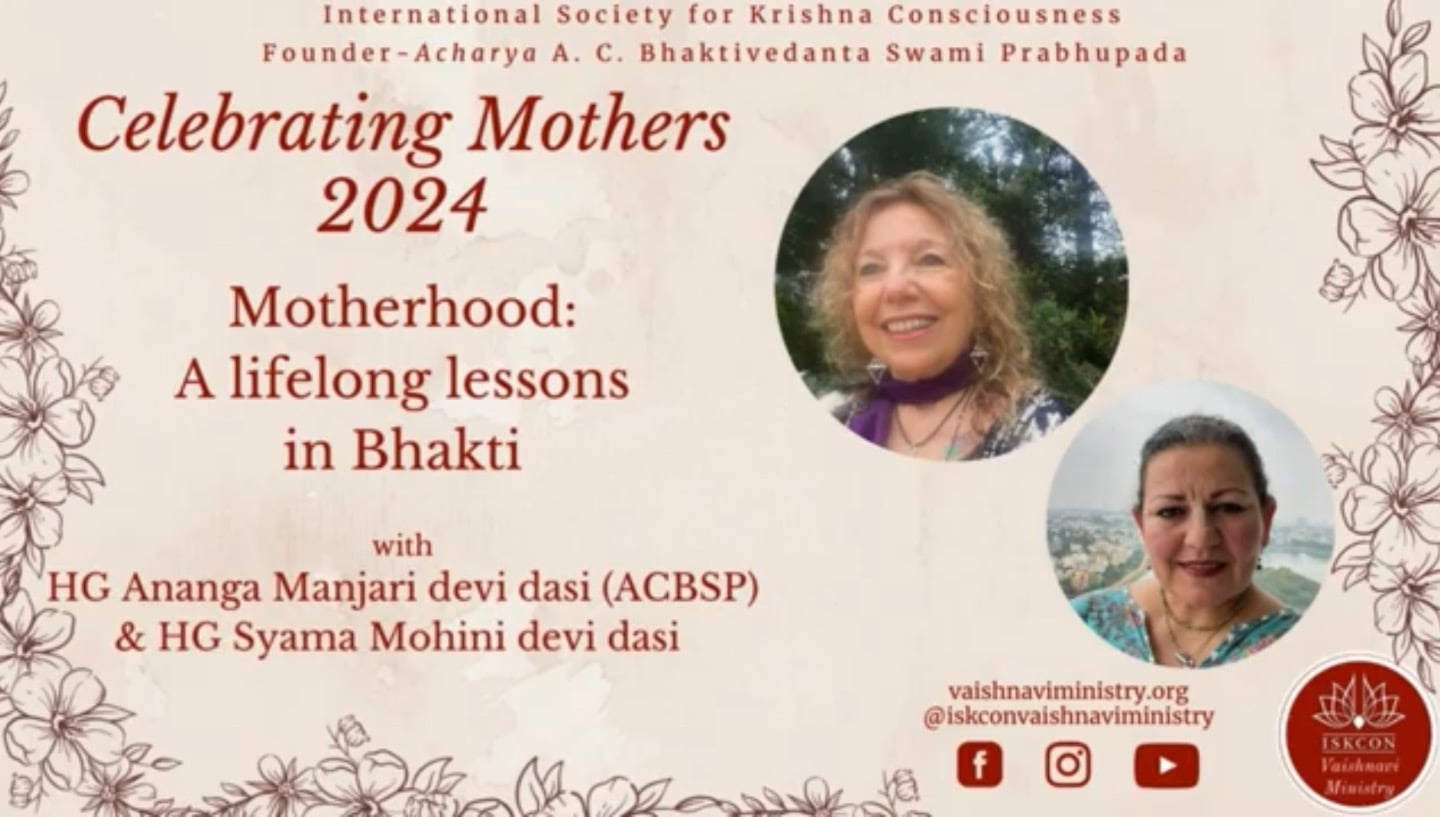ISKCON Boise Celebrates 25 Years as a Generation Comes Full Circle
By Madhava Smullen | Aug 27, 2011
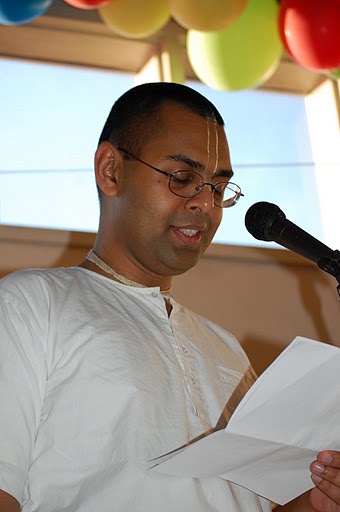
Nearly 500 people visited ISKCON Boise, Idaho this August 21st, to celebrate Sri Krishna Janmastami, as well as the 25th anniversary of “the family temple.”
Today, the family is a big one, but the same spirit of togetherness holds from back when Ananta Rupa Dasa and his wife Aruddha Dasi started the temple in their home in 1986. Today, things have come full circle as their son Radhika Ramana Dasa serves as chairman of the temple board, and his children are the life of the temple.
The 25th anniversary celebrations began with 6:30pm arati, as the altar curtains opened to reveal the Deities of Sri-Sri Radha-Banke Bihari in their “house of 10,000 flowers,” an incredible decorative arrangement of carnations, marigolds and roses traditionally used at the original Radha-Banke Bihari Mandir in Vrindavana, India.
“We then read Boise Mayor David Bieder’s proclamation of August 21st as Hare Krishna Temple Day, in Boise, Idaho,” says Radhika Ramana. “The last time we received something like this from the Mayor’s office was in 1999, when the previous Mayor presided over the ribbon-cutting ceremony for our new temple building.

So this was a big occasion for us. It was great to get a sense of recognition from the local Boise community, which we’ve been serving now for 25 years.”
Devotees and congregational members then gathered to watch a retrospective film showing photos and video of important occasions and events over the past 25 years. A live commentary was provided as the audience watched milestones in their lives, spotted themselves as children, and saw how three generations of devotees had served and grown in ISKCON Boise.
“It really gave us a chance to celebrate our past, and consider the promise of the future,” Radhika Ramana says.
Next, local Boiseans and devotees enjoyed the spiritual fairground atmosphere on the temple grounds, with colorful tents, food and drink, a gift store, and a stage show. The far-ranging performances included musical compositions with English lyrics by local devotees, traditional Bharat Natyam and Kuchipudi dance, and a multi-instrumental rendition of Bhaktivinode Thakura’s song Gopinatha.

There was also a moving drama about Uddhava bringing Lord Krishna’s message to the gopis in which a single actress played all the roles, and a play about Krishna’s childhood pastimes as Damodar by the young children of the community.
“Later in the evening, when things got quieter, we had Jhulan Yatra, in which we pushed the small Deities of Radha-Banke Bihari on a swing,” says Radhika Ramana.
“Next we had a boat festival, in which devotees pulled the Deities on a small swan-shaped boat using a flower rope, around a man-made pond outside the temple.
Finally, we had the traditional midnight Abhisekha bathing ceremony, arati, and feast.”
It was a well-attended festival celebrated with great pomp. However Radhika Ramana—who became chairman of the new temple board last year when his parents retired from day-to-day management—remembers when ISKCON Boise’s festivals were held in his living room with a handful of guests.

“My parents moved here from Los Angeles when Boise was even smaller than it is now—the city has since grown from less than 100,000 people to over 200,000,” he says. “They moved in 1986 because my father had gotten a job with Hewlett Packard, but there were no other devotees here at the time. So they decided to try to build a devotee community themselves.”
Ananta Rupa Dasa and Aruddha Dasi began holding Sunday Feasts at their home, which started with small gatherings but grew larger and larger.
“Pretty soon full feasts were being cooked in our kitchen, devotees were eating prasadam all over the house, and the children were playing in my bedroom,” says Radhika Ramana, who was a young child himself at the time. “We were bursting at the seams.”
With the help of the community, Radhika Ramana’s parents purchased the property next door, and in 1999 they had a brand new temple with a Vedic-style dome erected between the two buildings.
The temple was built for the people of Boise by the people of Boise. Many locals, who hadn’t known anything about Krishna consciousness before, put their hearts into every element of the construction and said they enjoyed learning about a new religion and culture in the process.

Architect Bruce Poe designed a tasteful red brick exterior which, apart from the telling gold dome, blended in with the neighborhood. Stained glass master Michael Booth created a stunning window featuring the Dasavatara, Krishna’s ten primary incarnations, and claimed that it was the best work he’d ever done. And Mike Baltzell, an associate professor of Theater Arts at Boise State University, painted the ceiling of the temple to look like the vividly colorful cover of the first canto of Prabhupada’s Srimad-Bhagavatam, depicting the spiritual sky to breath-taking effect.
“Once the new temple arose, devotees began buying homes on the same street,” says Radhika Ramana. “Gradually it became a nice quiet plaza where children of different families ran from home to home, playing and inviting each other to programs held by their parents. It had—and still has—a wonderful community feel.”
Attendance of festivals increased from fifty to five hundred people. “Homemade” dramas put together by Radhika Ramana, his brother and their friends became elaborate productions on professional stages set up outside the temple. Boise Rathayatra, which started on the back of a rented flatbed truck, became a popular local event—first taking third prize for best float in the Old-Time Fiddler’s Parade in Weezer, Idaho, then snapping up first prize in the Boise State University Homecoming Parade, and finally getting a coveted place in the City’s annual Fourth of July Parade.

Meanwhile, Radha-Banke Bihari’s altar tranformed from a coffee table in the Gupta family’s living room to a simple wooden structure, then to a huge, beautiful teakwood altar.
The Deities and their standards of worship also changed, even as Radhika Ramana progressed in Krishna consciousness—when he was a child, he worshipped the family’s small home Deities himself; when he received first initiation that became the minimum standard; and when he received second initiation the temple installed large, beautiful Deities worshipped lavishly by brahmana priests.
“The temple and I have grown up together, in many ways,” Radhika Ramana says. “So much of what I received in my childhood was centered around the temple and the efforts of the temple devotees. So now, for the sake of my own children and their friends, I feel it’s time for me to give back.”
Giving back is so important to Radhika Ramana that he serves as chairman of the Boise temple board even while working as Associate Professor of Religious Studies at the College of William and Mary in Williamsburg, Virginia, on the other side of the country.
“It is a bit of a challenge,” he admits. “But I spend four months out of the year in Boise, and the rest of the time I do what I can over the phone and email.
Meanwhile, I stagger visits with my brother, and the rest of the temple board do an excellent job maintaining everything while we’re gone.”
Today, ISKCON Boise is a “busily humming temple,” as Radhika Ramana likes to put it. It has a solid long-term relationship with Boise State University, owed largely to devotee youth consistently choosing the school for their undergraduate studies over the years. And this has yielded an ISKCON student organization that invites guest speakers on a regular basis, Festival of India programs on the University campus, and annual University auditiorum performances by youth of the Krishna Culture bus tour.
The temple also has its own regular series of cooking classes, as well as an Interfaith homeless sanctuary which it helped to established along with other religious groups.
“Now that we’ve celebrated our 25th anniversary, the task of the new temple board over the next few months will be to make a strategic plan for the next five or ten years—or even the next quarter of a century—outlining what areas we want to grow in,” says Radhika Ramana.
One of his most treasured goals as the new chairman will be to refocus on involving children in the temple, just as they were when he was growing up.
“Our temple was one where practically everything was done by children—from leading the Sunday arati, to performing plays, to cleaning and cooking, to the older children giving class,” he says. “It was really a temple run by the children, for children. It was a very special foundational experience for me. So over the coming years, I hope to recreate the same experience for a new generation.”





